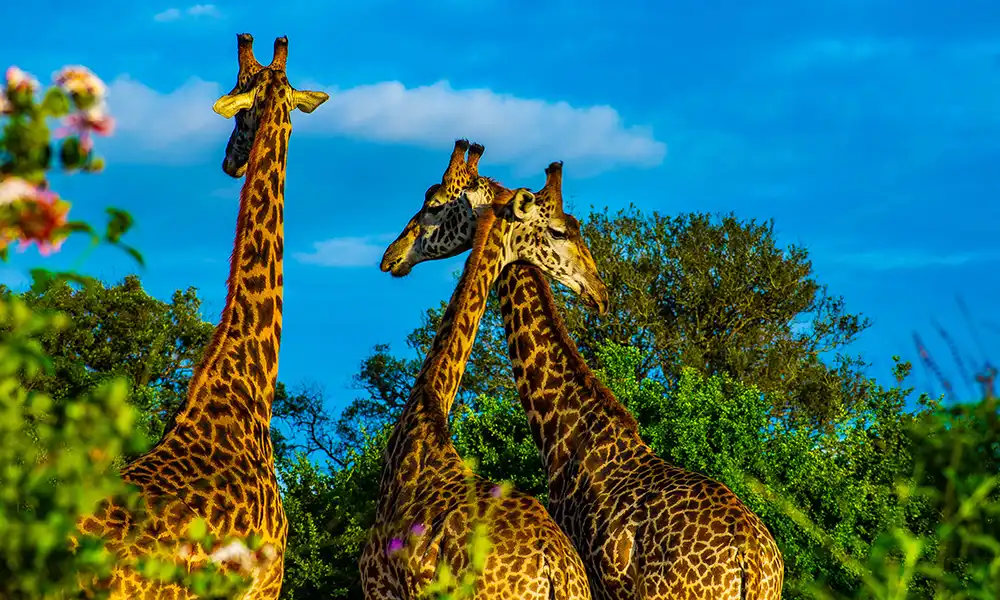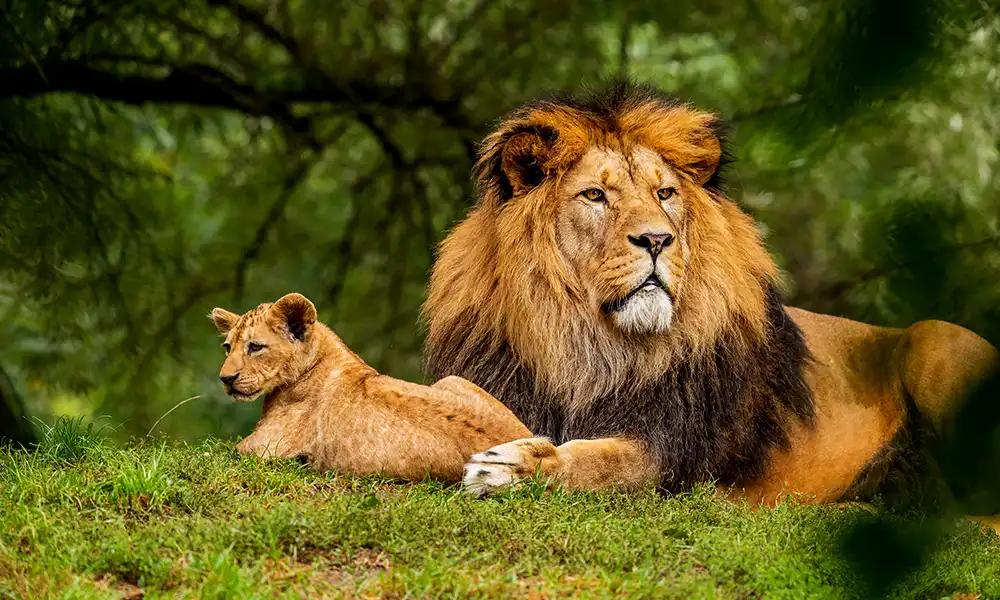Amboseli & Mara - Safari Tours
6 days & 5 nights
In these 6 days adventure journey through Amboseli National Park, home of the largest tuskers you will ever see, under the watchful Kilimanjaro. Stop for a night in the idyllic Lake Naivasha on your way to the last leg of the trip: the Mara, probably the most prolific wildlife destination on the planet.
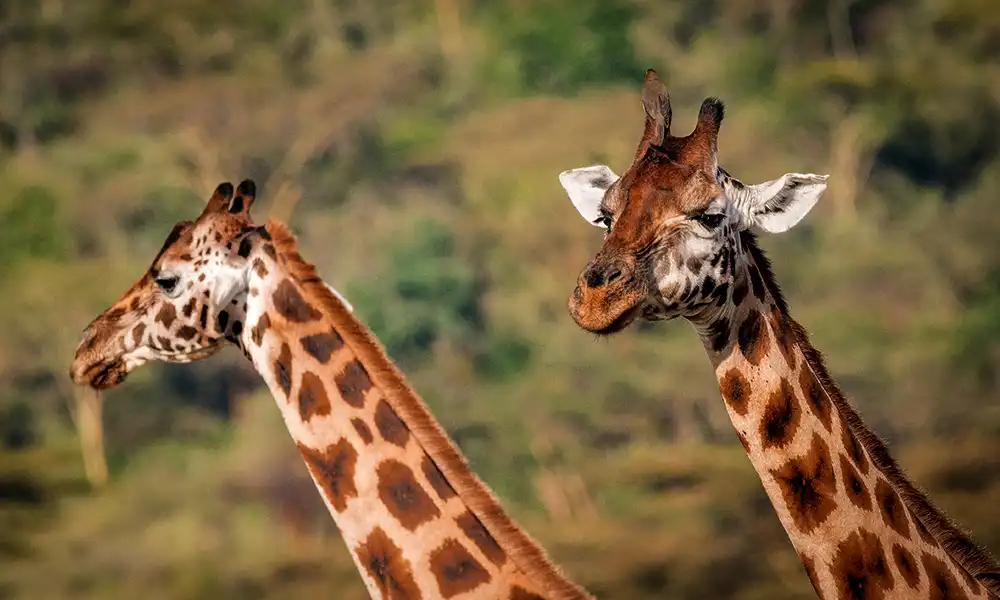
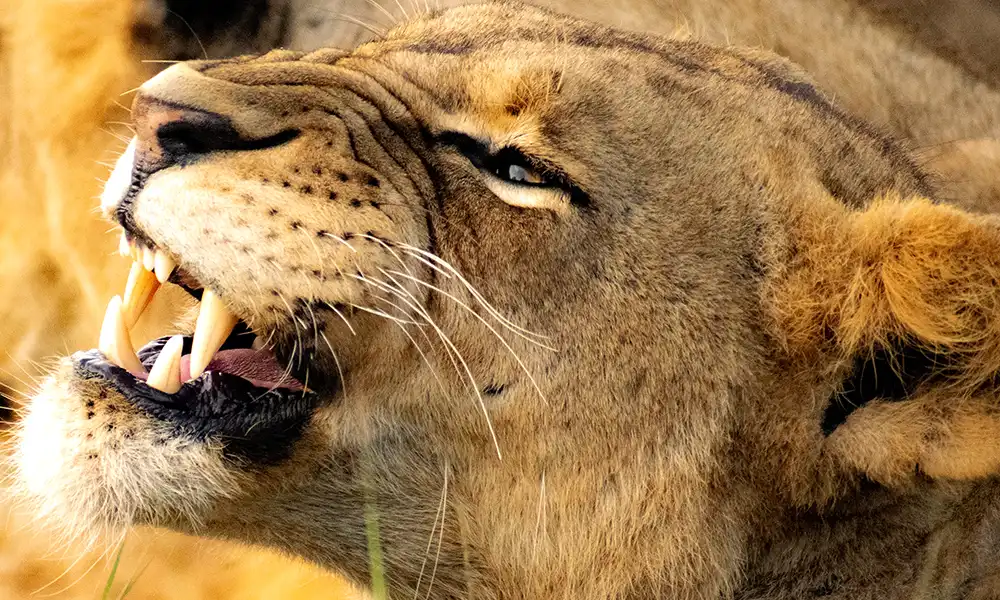
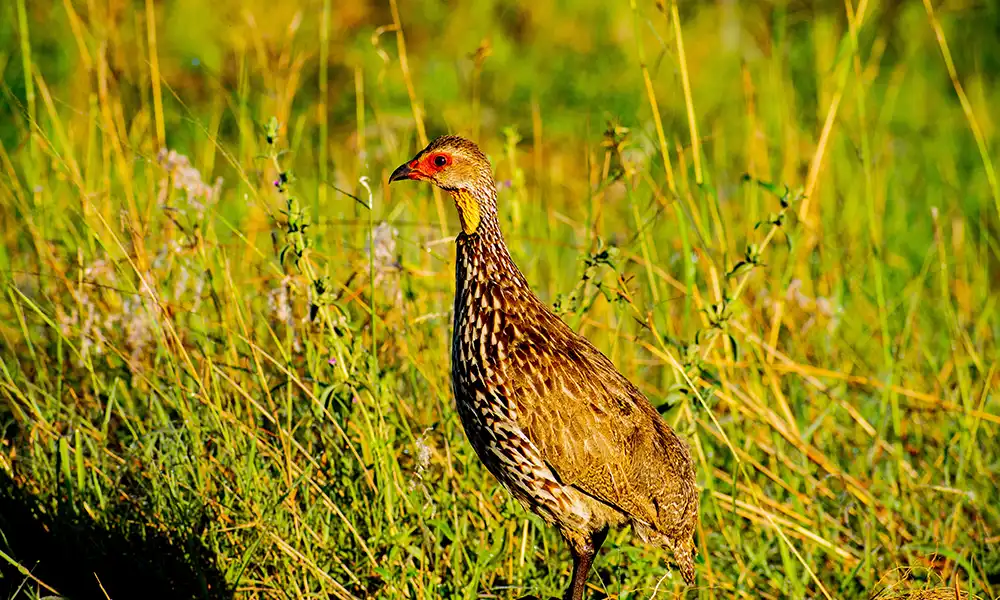



Itinerary - Kenya's Amboseli & Mara - 7 Days
Left un-harassed by poachers, elephants feeding and bathing in the swamps must form the highlights of any Safari.
4-Hours
Early Morning start and drive to Amboseli National Park, check in at your accommodation, day spent at leisure or have an afternoon game drive. Amboseli National Park is situated due south of Nairobi, most of the park consists of a dry, ancient lakebed and fragile grassland with patches of acacia woodland, while in the southern area there are several small, rocky, volcanic hills. Around the swamps Ol Kenya, Ol Tukai and Enkongo Narok, the vegetation is lush with yellow-barked acacias and phoenix palms.
Dinner and overnight at campsite or lodge.


Explore Amboseli
Rising early for good views of Mount Kilimanjaro before clouds build up over the summit, with packed lunch provided, an optional visit to a Maasai village can be planned after breakfast. A visit reveals the singing and dancing that are part of their daily lives and sacred rituals. A glimpse into their homes and social structure is a poignant experience. Despite its changing habitat, Amboseli National Park is possibly the best wildlife area in the whole of Africa to experience elephant at close range. Left unharassed by poachers, elephants feeding and bathing in the swamps must form the highlights of any Safari.
Dinner and overnight at campsite or lodge.
Amboseli Lake Naivasha
There are over 100 species of birds in the park, including Vultures, Verreaux's Eagles, Augur buzzard, and Swifts. African buffalo, Zebra, Eland, Hartebeest, Thomson's gazelle, and Baboons are also common.
An early morning drive to Lake Naivasha, it is the highest and the most beautiful of the Rift Valley lakes. At 1910m (6200f), the water is fresh, and the lake is fringed with dense clumps of papyrus (ancient Egyptian once used this to make paper). Kingfishers use the papyrus as a perch, herons hide in it while searching for food. Naivasha is yet another area popular for bird watching (over 400 species have been recorded). It is also a favourite weekend retreat for Nairobi residents, who come here to sail, water ski and fish. There are no crocodiles in the lake as the water is too cold for them, due to altitude but there are a number of hippos. Along the lakeshore, vineyards produce grapes for the country's fledgeling wine industry.
Dinner and overnight at campsite or lodge.
*A boat ride in Lake Naivasha is included.
Alternative: If you wish, instead of Lake Naivasha, you can enjoy a game drive in Lake Nakuru instead.
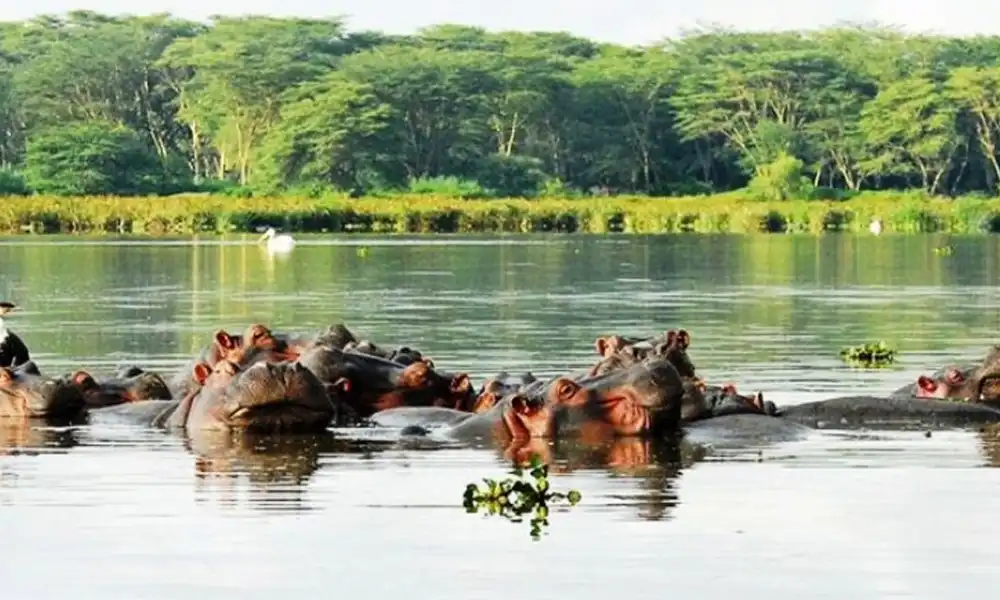
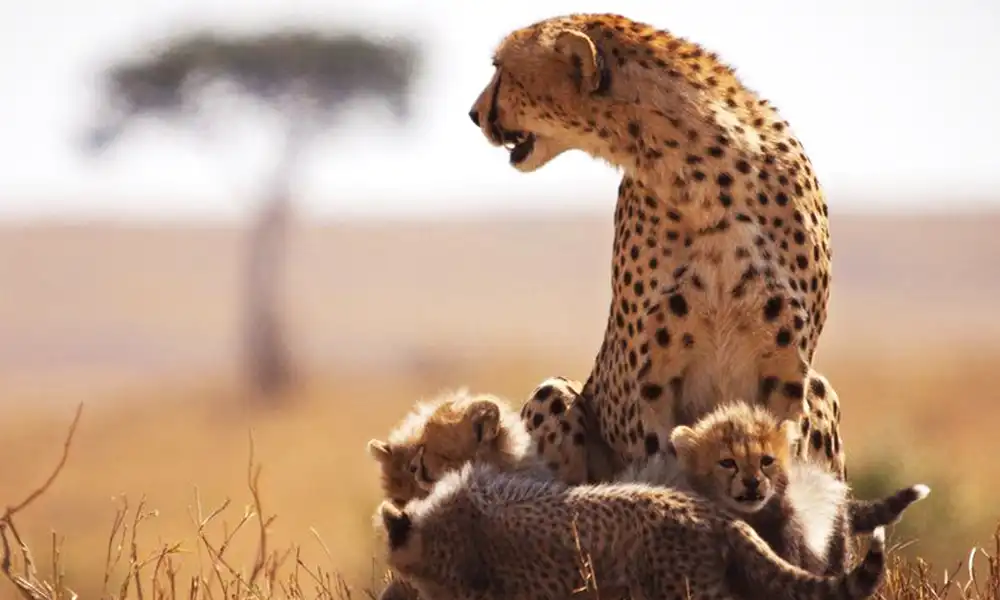
Lake Naivasha – Maasai Mara
The Mara hosts the spectacular seasonal migration of many thousands of Wildebeest, Zebras, and attendant predators. It’s one of the few places where it's possible to see the big five during a morning's game drive.
An early morning drive to Maasai Mara National Reserve, it holds on as one of the few places left on earth where wildlife still lives comparatively undisturbed, in the numbers that once roamed the plains and forests of Africa. As the northern tip of the vast Serengeti ecosystem, the Mara hosts the spectacular seasonal migration of many thousands of Wildebeest, Zebras, and attendant predators. Have lunch en-route, the evening is spent at leisure.
Dinner and overnight at campsite or lodge.
Extra tours recommended: Hot Air Balloon Safari | Visit a Maasai Village
Maasai Mara
Today we have a full day game drive, with packed lunch provided. The reserve is well known for its black-manned lion, as well as its abundant resident wildlife and its one of the few places where it's possible to see the big five during a morning's game drive. Many of the cheetahs are so tame they seek shelter from the hot sun under one's vehicle and several even climb onto the roof to get a better view of prospective prey. For the bird enthusiast, almost 500 species have been recorded: among these 16 species of eagle, plus many hawks and falcons, 6 species of vultures, 8 species of storks 4 of bustard (including the Kori bustard, the world's heaviest flying bird), and 9 species of sunbirds.
Dinner and overnight at campsite or lodge.
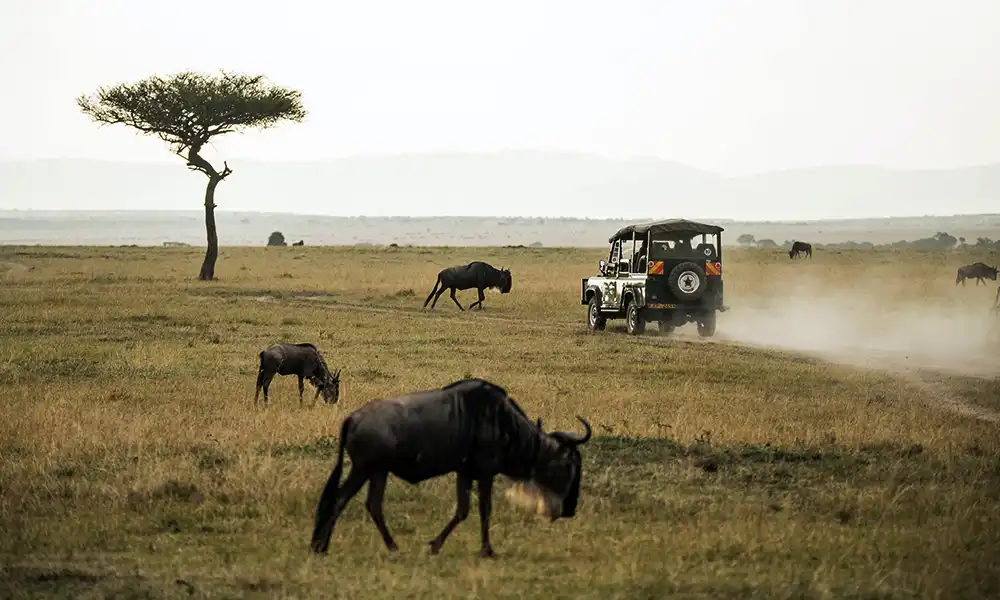

Maasai Mara – Nairobi
We wake up at 6 am for a sunrise game drive. At 9 am, we drive back to accommodation for brunch then depart for Nairobi.
Lunch en-route and arrival in Nairobi in the late afternoon.
Inclusions
-
All transport, 4WD safari vehicle with pop-up roof for game viewing Minivan (standard) or Land Cruiser (for an extra cost)
-
Accommodation as detailed (Full Board while in the safari, except for drinks)
-
Unlimited water
-
High End Binoculars that will greatly enhance your safari experience.
-
Services of various local guides
-
All National Park entrance and camp site fees
-
All food - breakfasts, packed lunches, and evening meals
-
Donations and payments to local community projects
Exclusions
-
International flights
-
Travel and personal accident insurance
-
Visa, passport, vaccinations, medicines
-
Tips
-
Expenditure on alcoholic drinks, souvenirs, personal items
-
Optional excursions/activities not detailed in itinerary
-
Any additional services requested
What to pack

Sunscreen

Sunhat

Sunglass

Light weight long sleeve shrits & pants

Comfortable shoes

Binoculars

Camera

Insect repellent
When to visit Amboseli & Masai Mara
Amboseli National Park is a great all year round, this is because of its flat landscape making it easier to spot animals from distance, the best time to visit is between June and October when the animals are more concentrated around waterholes and also there is less rainfall. April to June is low season and the rains have made the park green so its beautiful. The best time to visit Masai Mara National Reserve is between July and October which coincides with the wildebeest migration, this is also when the animals are concentrated around the waterholes and there is less rainfall. April to June is low season and the rains are heavier, the park could also get muddy.



